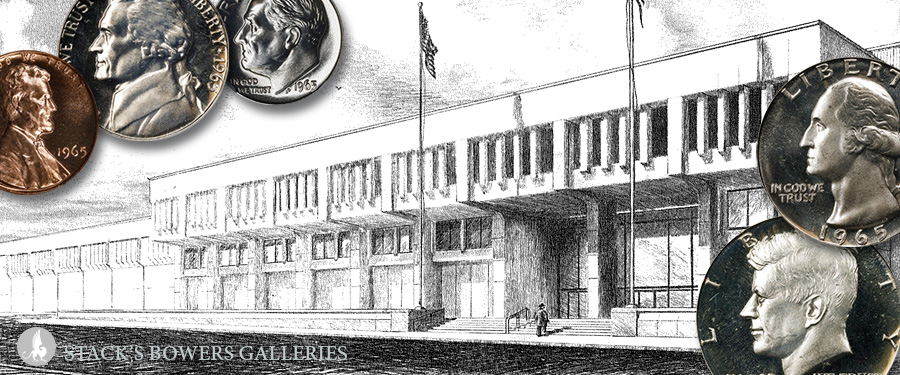
Fifty-seven years ago this week, the groundbreaking was held for the Fourth Philadelphia Mint, designed by Philadelphia architect Vincent Kling. The facility, which has been operational since 1969, is (according to a 2019 Mint press release marking the facility’s 50th anniversary), the world’s largest in terms of size and production. It opened against the backdrop of, and at least in part in response to, the coin shortages which wracked the U.S. economy at midcentury.
By the late 1950s and early 1960s, the Third Philadelphia Mint was showing its age. Opened in 1901, the massive facility served the nation’s coinage needs reasonably well for more than half a century. However, coin shortages in the late 1950s and early-to-mid 1960s revealed a need for expanded production capacity and in 1963, a new facility in Philadelphia was authorized.
According to 1964 House of Representatives proceedings, the initial target opening date for the new facility was 1966, but the facility would not open until September 1969. A groundbreaking ceremony was scheduled for September 17, 1965. A Treasury Department press release for the event touted the new facility as “the world’s biggest and most modern mint.”
The event was attended by Treasury officials and other notables and a five-handled shovel was used to break ground for the facility. These included:
• Undersecretary of the Treasury Joseph W. Barr, who would later serve a remarkably short 28-day tenure as Secretary of the Treasury which resulted in the Series 1963B $1 Federal Reserve Notes bearing his name which are now collectible. Interestingly, Barr is also credited with coining the term “taxpayer’s revolt,” according to the Treasury Department’s website.
• James H. J. Tate, Philadelphia’s mayor.
• Robert A. Wallace, Assistant Secretary of the Treasury for Economic Affairs.
• Eva B. Adams, Director of the Mint.
• Michael Sura, the Philadelphia Mint’s Superintendent. The Third Mint building was purchased by the Community College of Philadelphia in 1971 and is now part of that institution’s main campus, thus avoiding the fate of the Second Mint, which was demolished in 1902, shortly after closing its doors. The Tiffany glass mosaics from the third facility were installed in the current mint in 1971, the same year that the former building was sold.





